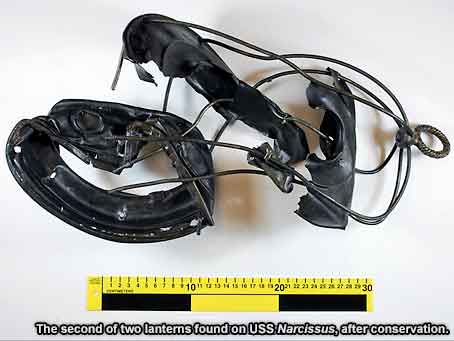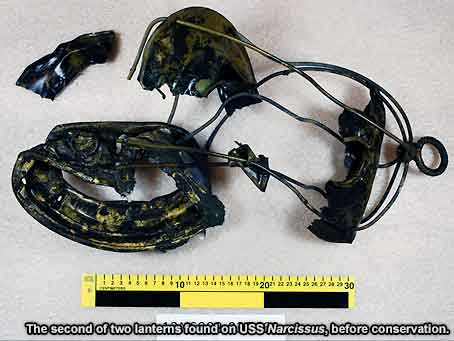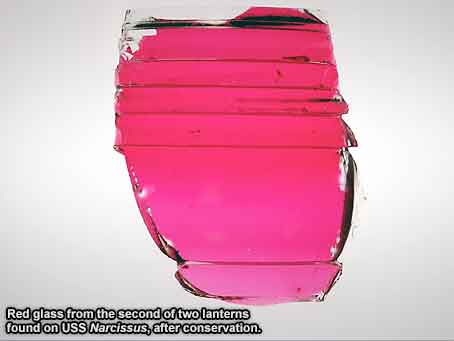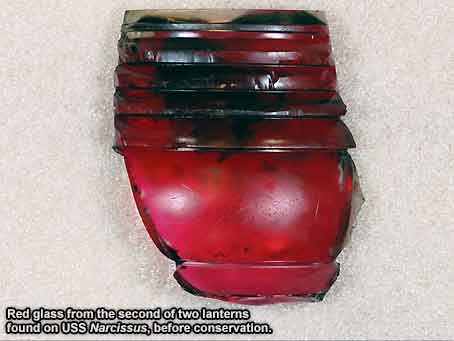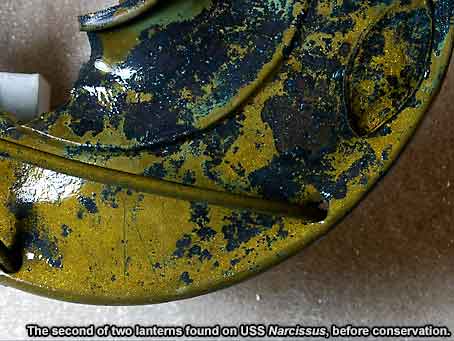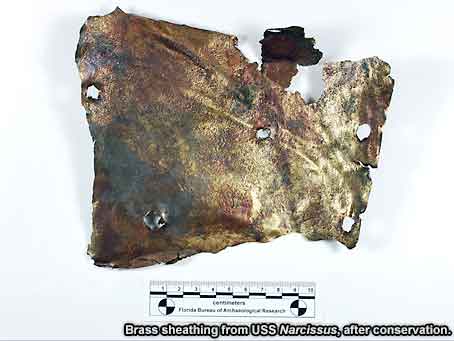Click the play button above to view a brief history of USS Narcissus. View a transcript (PDF 20KB) of this video.
USS Narcissus was built in 1863 during the Civil War, in East Albany, New York. The United States Navy purchased the tugboat under the name Mary Cook, and commissioned her as USS Narcissus at the Brooklyn Navy Yard in February 1864. A fourth rate, wooden-hulled screw tug, her hull measured 81 feet 6 inches, with a beam of 18 feet 9 inches, and a depth of hold of 8 feet. When loaded, her draft was 6 feet and she reportedly reached speeds of 12 knots, although her average speed was about 5 knots. She was originally armed with one 20-pounder Parrot rifle and one heavy 12-pounder smooth bore cannon.
In January 1864, Narcissus steamed from New York to New Orleans, reporting to Rear Admiral David Farragut for duty in the West Gulf Blockading Squadron. Narcissus participated in operations in Mississippi Sound, New Orleans, Mobile Bay, and Pensacola. In August 1864, she served at Fort Morgan during the Union victory at the Battle of Mobile Bay. On December 7th of that same year, while on picket duty at Dog River Bar, Mobile Bay, Narcissus struck a mine while paying out her anchor line during a fierce storm. The mine caused an explosion that left a large hole in the starboard side of the hull amidships. Although the vessel sank in fifteen minutes, no lives were lost and all ammunition and arms were removed. On December 28, 1864, Narcissus was refloated and brought to the Pensacola Naval Yard for repairs where she remained through the remainder of the war.

In October 1865, with the war concluded, Acting Rear Admiral Henry Knox Thatcher no longer needed the many vessels previously required for an active blockade of southern ports. Thatcher stated in a communication that USS Narcissus and other screw tugs were ready to be sent north for sale. On January 1, 1866, USS Narcissus and USS Althea, both screw tugs, began their journey along the eastern shores of the Gulf of Mexico on their way to New York to be decommissioned and sold.
According to the deck logs of USS Althea, both Althea and Narcissus encountered a storm off the coast of Tampa on January 4, 1866. The commanders made the decision to anchor outside the port and wait out the storm. Althea headed northwest against the tide and the wind while Narcissus took a seemingly easier route to the west, feeling the brunt of the wind and tide on her starboard beam. It was during this final journey to avoid the shoals that Narcissus, traveling at full speed, ran aground on a sandbar. Althea also briefly grounded on a sandbar, but was able to power her engine to break free.
At 6:15 pm, the crew of Althea noticed Coston signal flares coming from Narcissus. Althea returned the signal at 6:30 pm, but received no response. Thirty minutes later, Althea noted more signals from Narcissus, but could not understand them. Althea returned with a final signal, but again received no response from Narcissus. Just after 7 pm, Althea’s deck logs note that Narcissus’ boiler exploded as a result of grounding on a sandbar. The crew of Althea stood by in disbelief as Narcissus was seen to break up and sink into the water along with her entire crew.
The next morning Althea anchored off Egmont Key and foundthe beaches strewn with wreckage from Narcissus along with the unidentified body of one of the firemen and the papers of Acting Ensign Bradbury and Mate J. L. Hall. Althea stayed in Tampa for two more days to look for survivors, and finding none continued her journey.
The shipwreck of USS Narcissus now rests in shallow water northwest of Egmont Key, just outside Tampa Bay. In January 2015, in partnership with the US Navy and the Florida Aquarium, USS Narcissus was dedicated as Florida’s twelfth Underwater Archaeological Preserveby the Florida Department of State.
Click the thumbnails below to view larger versions of these historical images of USS Narcissus.
{caption}







